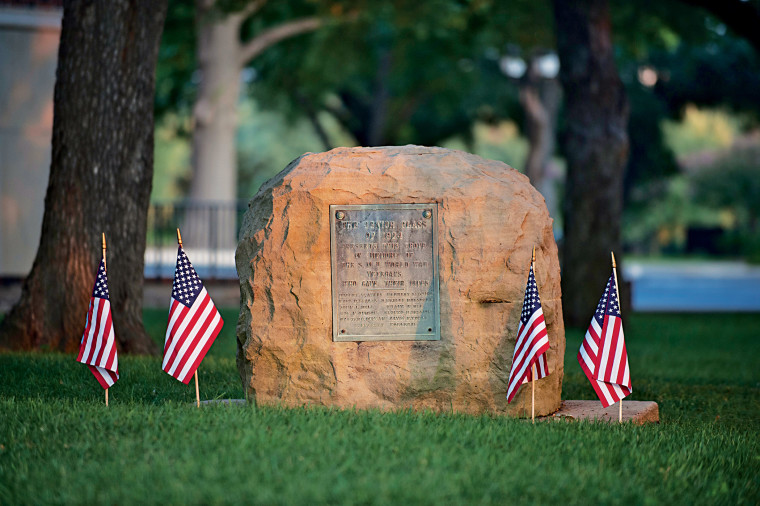Today, we celebrate Memorial Day, an opportunity to acknowledge and honor those who have given their lives for their country. Higher education and the military have always had a long, complex, and interesting history. In honor of our fallen heroes, today’s post shares what I believe is one of the more interesting periods of cooperation between the armed forces, the federal government, and higher education.

World War I plunged higher education into serious crisis. As the nation economically ramped up for the war effort, resources available to public colleges and universities institutions became increasingly limited. However, The challenge went far beyond finances as decreasing enrollment threatened the very survival of many institutions.
Between 1915 and 1918, attendance in the majority of the nation’s colleges fell sharply, some losing up to two-thirds of their enrollment. Many colleges lost an even greater percentage of male students.
National sentiment and the federal government’s efforts pulled battalion after battalion of students away from campuses.
College presidents and trustees proposed to close their institutions on more than one occasion.
Pushing President Woodrow Wilson, a former university president, and Congress for support, the leaders of public universities underscored the indispensability of higher education to society emphasizing the importance of educated and trained men to the nation at war and in peace. The federal government, with a sympathetic ear in the White House, responded to the appeals from higher education.
First, Congress authorized the organization of the Reserve Officers Training Corps (ROTC). Following that action, President Wilson issued General Order 15 which officially established the links between the army and the academia. In an effort to encourage young people to go to college, the federal government initiated the Student Army Training Corps (SATC).
The SATC constituted the most significant measure of government intervention in higher education during the World War I. Under the program, the federal government essentially assumed control of participating institutions. Existing infrastructure and human resources were deployed and extra funding was allocated to enable the colleges to recruit and train army officer candidates as well as technical and administrative personnel.
The presence of the SATC significantly altered campus life. Military training became a substantial portion of students’ daily schedule with a resulting decrease in the time given to academic studies.
The extent of change in campus life caused concern as reflected in the Princeton University’s Alumni magazine, “Every day Princeton becomes less an academic college and more a school of war” (Levine, 1986, p. 29). The majority of faculty, however, welcomed SATC and embraced the changes it brought to campus.
Besides the obvious financial benefit, they believed the program was an opportunity for service to the nation and for enhanced public appreciation of the colleges’ relevance to society.
The introduction of SATC along with other moves of government intervention accelerated the expansion of higher education. It triggered an enrollment boom that lasted for a decade. Research suggests that colleges across the country enjoyed a 25% increase in enrollment.
The ranks of the faculty also grew larger. While innovative courses were added to old ones, new subjects were offered; new departments and schools were springing up everywhere. As a result, collegiate education was redefined, and its horizon broadened.
The federal intervention, although at the request of higher education community, proved to work toward the best interest of both the nation and the colleges. On the one hand, it safeguarded an uninterrupted flow of trained leaders, technical and administrative experts for the war effort and for postwar construction of the country. On the other, involvement with government brought public recognition to higher education as well as financial benefits.
For example, with SATC, the government gave about $900 for the tuition, room and board of each student-soldier. In return, each college was to provide a minimum of two years of collegiate-grade education to at least 100 men, and in addition, guarantee a place in its SATC unit to any high school graduate who desired to serve.
The financial benefits derived from working with the government enabled public higher education build research laboratories, libraries and other collegiate facilities.
Moreover, by responding to the wartime societal needs and reaching out to new constituencies, colleges and universities demonstrated their potential to serve the nation.
The action also improved the public perception of higher education and its critical role in society. Largely, it is this recognition that drives the increased public interest and support for higher education accounting for much of the expansion of public higher education during and after World War I.
Autonomy and service to the public are two strong traditions of the American public higher education. In a time of national crisis, the academic citizens chose to put service before autonomy.
They reached out to the public and took the initiatives to adapt their institutions to the nation’s needs. President Theodore Roosevelt once observed that “ideas and intellect were useless unless they were fused with a sense of moral responsibility and a willingness to act on those ideas and ideals” (Levine, 1986, p. 33).
At this critical historical juncture, it must be this sense of moral responsibility that gave our educators the strength and courage to turn threat to the extinction of American colleges into a wonderful opportunity of unprecedented expansion of American public higher education. It is this same spirit that is needed today from both the higher education and the federal government.
As you celebrate Memorial Day, I hope you take a few minutes to think about all those who have given the last full measure of devotion to our country. And as we return to work, I hope we are able to live up to their lesson to serve people with our ideas, intellect, and our sense of moral responsibility.

